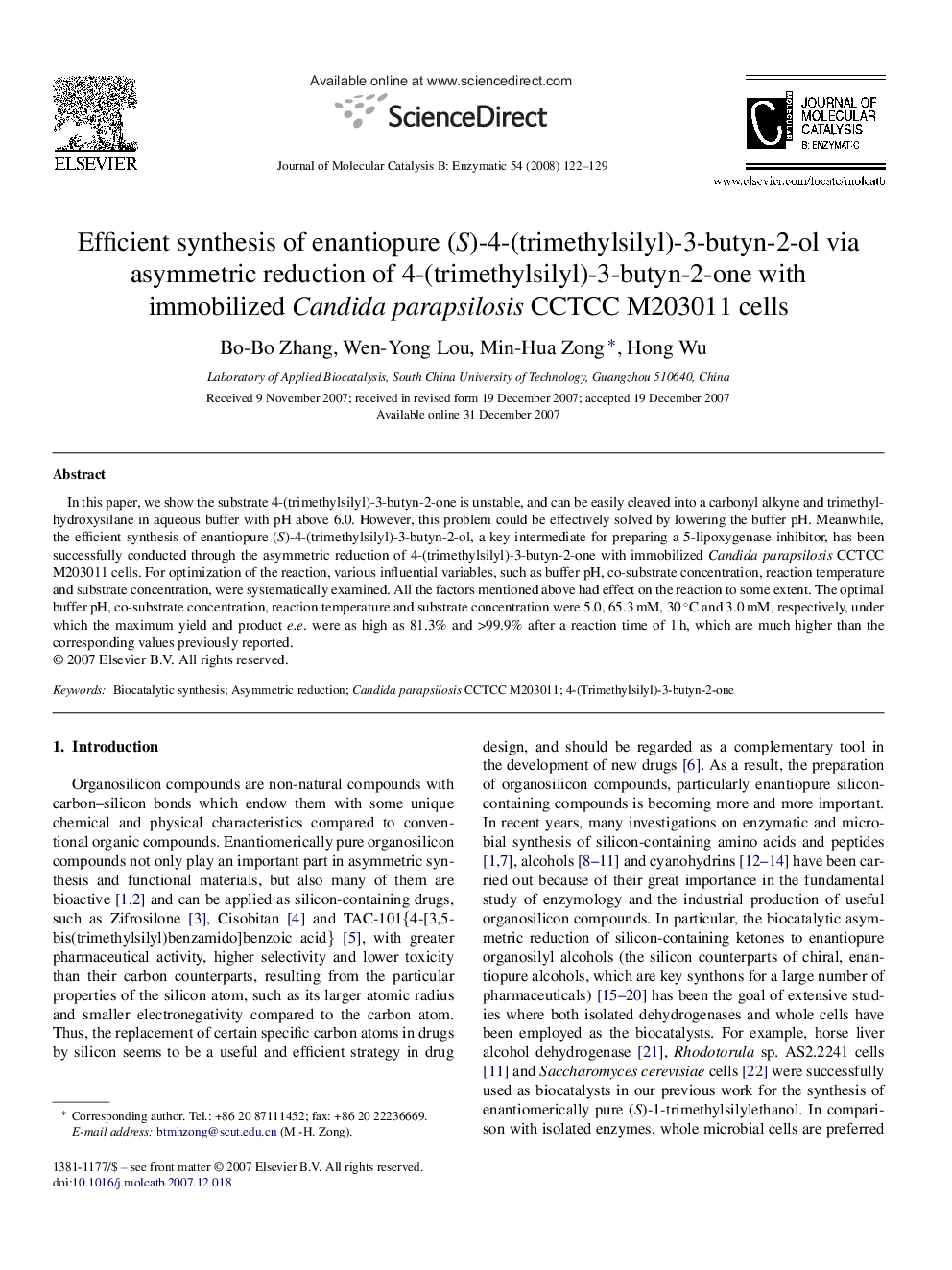| کد مقاله | کد نشریه | سال انتشار | مقاله انگلیسی | نسخه تمام متن |
|---|---|---|---|---|
| 70979 | 48858 | 2008 | 8 صفحه PDF | دانلود رایگان |

In this paper, we show the substrate 4-(trimethylsilyl)-3-butyn-2-one is unstable, and can be easily cleaved into a carbonyl alkyne and trimethylhydroxysilane in aqueous buffer with pH above 6.0. However, this problem could be effectively solved by lowering the buffer pH. Meanwhile, the efficient synthesis of enantiopure (S)-4-(trimethylsilyl)-3-butyn-2-ol, a key intermediate for preparing a 5-lipoxygenase inhibitor, has been successfully conducted through the asymmetric reduction of 4-(trimethylsilyl)-3-butyn-2-one with immobilized Candida parapsilosis CCTCC M203011 cells. For optimization of the reaction, various influential variables, such as buffer pH, co-substrate concentration, reaction temperature and substrate concentration, were systematically examined. All the factors mentioned above had effect on the reaction to some extent. The optimal buffer pH, co-substrate concentration, reaction temperature and substrate concentration were 5.0, 65.3 mM, 30 °C and 3.0 mM, respectively, under which the maximum yield and product e.e. were as high as 81.3% and >99.9% after a reaction time of 1 h, which are much higher than the corresponding values previously reported.
Journal: Journal of Molecular Catalysis B: Enzymatic - Volume 54, Issues 3–4, August 2008, Pages 122–129